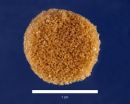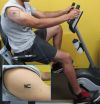(Press-News.org) Researchers at the Gladstone Institutes have shown that reducing brain levels of the protein tau effectively blocks the development of disease in a mouse model of Dravet syndrome, a severe intractable form of childhood epilepsy. This therapeutic strategy not only suppressed seizure activity and premature death, but also improved cognitive and behavioral abnormalities that can accompany this syndrome.
Previous studies from this group have shown that lowering tau levels reduces abnormal brain activity in models of Alzheimer's disease, but this is the first demonstration that tau reduction may also be beneficial in intractable genetic epilepsy.
"It would really be wonderful if tau reduction turned out to be useful not only in Alzheimer's disease, but also in other disabling neurological conditions for which there currently are no effective treatments," said senior author Lennart Mucke, MD, the director of the Gladstone Institute of Neurological Disease and a professor of Neurology and Neuroscience at the University of California, San Francisco. "We suspected that this approach might be beneficial in Dravet, but we couldn't be sure because of the severity of this syndrome and the corresponding model. We are thrilled that our strategy was so effective, but a lot more work is needed to advance it into the clinic."
Dravet syndrome is one of the most challenging forms of childhood epilepsy, resulting from a specific genetic mutation that affects sodium channels in the brain. Frequent, relentless seizures are accompanied by cognitive impairments and behavioral problems similar to autism, and up to 20% of patients succumb to sudden death. Current treatments for Dravet syndrome are largely ineffective, making research into the disorder particularly urgent.
"I am especially excited about the improvements we observed in cognitive and behavioral dysfunctions because these abnormalities are particularly hard on the kids—and their parents," said first author Ania Gheyara, MD, PhD, a staff scientist at Gladstone who is also affiliated with the UCSF Department of Pathology. "Our hope is that this approach will be broadly applicable to many different types of epilepsy."
In the study, which was published online today in the Annals of Neurology, the scientists reduced the level of the protein tau by genetically engineering Dravet mouse models, "knocking out" the gene associated with tau production. The deletion of one copy of the gene resulted in substantial improvements in most symptoms, while deleting both copies eliminated them almost completely. This included a significant reduction in both spontaneous and heat-induced seizures. The latter were used to mimic the fever-related seizures that are often seen in the early stages of Dravet syndrome. Network activity in the brain was also normalized, providing additional support for the remarkable ability of tau reduction to suppress epileptic activity.
Additionally, tau reduction ameliorated the learning and memory deficits and behavioral abnormalities present in the Dravet mice, which may relate to the cognitive impairments and autism-like behaviors seen in the human condition.
"The next steps are to develop tau-lowering therapeutics that could be used in humans and to evaluate their safety and efficacy in preclinical studies," said Dr. Mucke, "objectives we are pursuing actively."
INFORMATION:
Other scientists who participated in the research include Ravikumar Ponnusamy, Biljana Djukic, Ryan Craft, Kaitlyn Ho, Weikun Guo, Mariel Finucane, and Pascal Sanchez. Funding was provided by the National Institute of Neurological Disorders and Stroke and the S.D. Bechtel, Jr. Foundation.
About the Gladstone Institutes
To ensure our work does the greatest good, the Gladstone Institutes focus on conditions with profound medical, economic, and social impact—unsolved diseases of the brain, the heart, and the immune system. Affiliated with the University of California, San Francisco, Gladstone is an independent, nonprofit life science research organization that uses visionary science and technology to overcome disease.
Reduction of tau protein improves symptoms in model of severe childhood epilepsy
Protein implicated in Alzheimer's disease has important treatment potential in genetic form of epilepsy
2014-08-13
ELSE PRESS RELEASES FROM THIS DATE:
'Shape-shifting' material could help reconstruct faces
2014-08-13
SAN FRANCISCO, Aug. 13, 2014 — Injuries, birth defects (such as cleft palates) or surgery to remove a tumor can create gaps in bone that are too large to heal naturally. And when they occur in the head, face or jaw, these bone defects can dramatically alter a person's appearance. Researchers will report today that they have developed a "self-fitting" material that expands with warm salt water to precisely fill bone defects, and also acts as a scaffold for new bone growth.
The team will describe their approach in one of nearly 12,000 presentations at the 248th National ...
Dust -- and the microbes hitching rides on it -- influences rain, climate
2014-08-13
SAN FRANCISCO, Aug. 13, 2014 — Dusty air blowing across the Pacific from Asia and Africa plays a critical role in precipitation patterns throughout the drought-stricken western U.S. Today, a scientist will present new research suggesting that the exact chemical make-up of that dust, including microbes found in it, is the key to how much rain and snow falls from clouds throughout the region. This information could help better predict rain events, as well as explain how air pollution from a variety of sources influences regional climate in general.
She will present a talk ...
Rooting out skin creams that contain toxic mercury
2014-08-13
SAN FRANCISCO, Aug. 13, 2014 — As countries try to rid themselves of toxic mercury pollution, some people are slathering and even injecting creams containing the metal onto or under their skin to lighten it, putting themselves and others at risk for serious health problems. To find those most at risk, scientists are reporting today that they can now identify these creams and intervene much faster than before. They're speaking at the 248th National Meeting & Exposition of the American Chemical Society (ACS).
The meeting, organized by the world's largest scientific society, ...
Tattoo biobatteries produce power from sweat (video)
2014-08-13
SAN FRANCISCO, Aug. 13, 2014 — In the future, working up a sweat by exercising may not only be good for your health, but it could also power your small electronic devices. Researchers will report today that they have designed a sensor in the form of a temporary tattoo that can both monitor a person's progress during exercise and produce power from their perspiration.
The team described the approach in one of nearly 12,000 presentations at the 248th National Meeting & Exposition of the American Chemical Society (ACS), the world's largest scientific society, taking place ...
A new look at what's in 'fracking' fluids raises red flags
2014-08-13
SAN FRANCISCO, Aug. 13, 2014 — As the oil and gas drilling technique called hydraulic fracturing (or "fracking") proliferates, a new study on the contents of the fluids involved in the process raises concerns about several ingredients. The scientists presenting the work today at the 248th National Meeting & Exposition of the American Chemical Society (ACS) say that out of nearly 200 commonly used compounds, there's very little known about the potential health risks of about one-third, and eight are toxic to mammals.
The meeting features nearly 12,000 presentations on ...
Passengers who survived terrifying Air Transat flight in 2001 help psychologists uncover new clues about post-traumatic stress vulnerability
2014-08-13
Toronto, Canada – An extraordinary opportunity to study memory and post-traumatic stress disorder (PTSD) in a group of Air Transat passengers who experienced 30 minutes of unimaginable terror over the Atlantic Ocean in 2001 has resulted in the discovery of a potential risk factor that may help predict who is most vulnerable to PTSD.
The study, led by researchers at Baycrest Health Sciences, is published online this week in the journal Clinical Psychological Science – ahead of print publication. It is the first to involve detailed interviews and psychological testing in ...
Why seniors don't eat: It's complicated
2014-08-13
WASHINGTON – More than half of older adults who visit emergency departments are either malnourished or at risk for malnutrition, but not because of lack of access to health care, critical illness or dementia. Despite clear signs of malnutrition or risk of malnutrition, more than three-quarters had never previously been diagnosed with malnutrition, according to the results of a study to be published online tomorrow in Annals of Emergency Medicine ("Malnutrition Among Cognitively Intact, Non-Critically Ill Older Adults in the Emergency Department").
"We were surprised ...
Giant Amazon fish becoming extinct in many fishing communities, saved in others
2014-08-13
An international team of scientists has discovered that a large, commercially important fish from the Amazon Basin has become extinct in some local fishing communities.
The team compared mainstream bioeconomic theory — which policymakers have depended on in order to protect fish populations — with the lesser-known "fishing-down" theory, which predicts that large, high-value, easy-to-catch fish can be fished to extinction.
"Bioeconomic thinking has predicted that scarcity would drive up fishing costs, which would increase price and help save depleted species," said study ...
Gene that controls nerve conduction velocity linked to multiple sclerosis
2014-08-13
Philadelphia, PA, August 13, 2014 – A new study published in The American Journal of Pathology identifies a novel gene that controls nerve conduction velocity. Investigators report that even minor reductions in conduction velocity may aggravate disease in multiple sclerosis (MS) patients and in mice bred for the MS-like condition experimental autoimmune encephalomyelitis (EAE).
A strong tool for investigating the pathophysiology of a complex disease is the identification of underlying genetic controls. Multiple genes have been implicated as contributing to the risk of ...
Clotting drug linked to fewer blood transfusions in joint surgery
2014-08-13
Tranexamic acid has been shown to reduce blood loss during or shortly after major joint surgery (the perioperative stage). However, safety concerns remain because large scale effectiveness studies are lacking.
In the USA, over 1 million hip and knee replacements are performed each year. In
England and Wales the figure is about 180,000.
So a team of US researchers, led by Dr Stavros Memtsoudis at Hospital for Special Surgery, Weill Cornell Medical College, and Dr Jashvant Poeran at Mount Sinai School of Medicine, both in New York, set out to determine the effectiveness ...
LAST 30 PRESS RELEASES:
Pre-school health programme does not improve children’s diet or physical activity, prompting call for policy changes, study finds
Autumn clock change linked to reduction in certain health conditions
AI images of doctors can exaggerate and reinforce existing stereotypes
Where medicine meets melody – how lullabies help babies and parents in intensive care
We may never be able to tell if AI becomes conscious, argues philosopher
AI video translation shows promise but humans still hold the edge
Deep ocean earthquakes drive Southern Ocean’s massive phytoplankton blooms, study finds
Without campus leftovers to pick through, the beaks of this bird changed shape during the pandemic
High-dose antibiotic does not reduce mortality in tuberculous meningitis
How many insects fly in the sky above the USA?
Could cheese protect your brain health?
Who faces more difficulty recovering from stroke?
Colliding galaxies create the brightest, fastest growing black holes at their center
New BrainHealth research reveals tradeoffs on sleep with cannabis use for chronic pain
Aging-US now on ResearchGate, enhancing visibility for authors and readers
'Molecular glue' stabilizes protein that inhibits development of non-small cell lung cancer
Mount Sinai Health System is recognized in 2025 Chime Digital Health Most Wired survey
From prey to predator: How carnivores spread beneficial fungi
Menopause symptoms may be frequent and have negative effects, according to female endurance athletes
US Congressmembers’ responses on X to mass shooting events differ along party lines
KAIST-UEL team develops “origami” airless wheel to explore lunar caves
Individual genetic differences render some therapies ineffective
Engineering dendritic cells boosts cancer immunotherapy
Sophisticated neuroimaging reveals PTSD in WTC responders is linked to measurable physical changes in brain structure
Health policy experts identify promising strategies for providing health care to homeless people
Study explores role of neutrophils in canine atopic dermatitis
Mayo Clinic researchers develop AI-ECG model to diagnose liver disease earlier
Heavy menstruation common among teenage girls – questionnaire reveals risk of iron deficiency
New study explores why open water swimming feels so powerful for midlife women
In echo of Jurassic Park, mosquitoes capture entire ecosystems in their blood meals
[Press-News.org] Reduction of tau protein improves symptoms in model of severe childhood epilepsyProtein implicated in Alzheimer's disease has important treatment potential in genetic form of epilepsy



